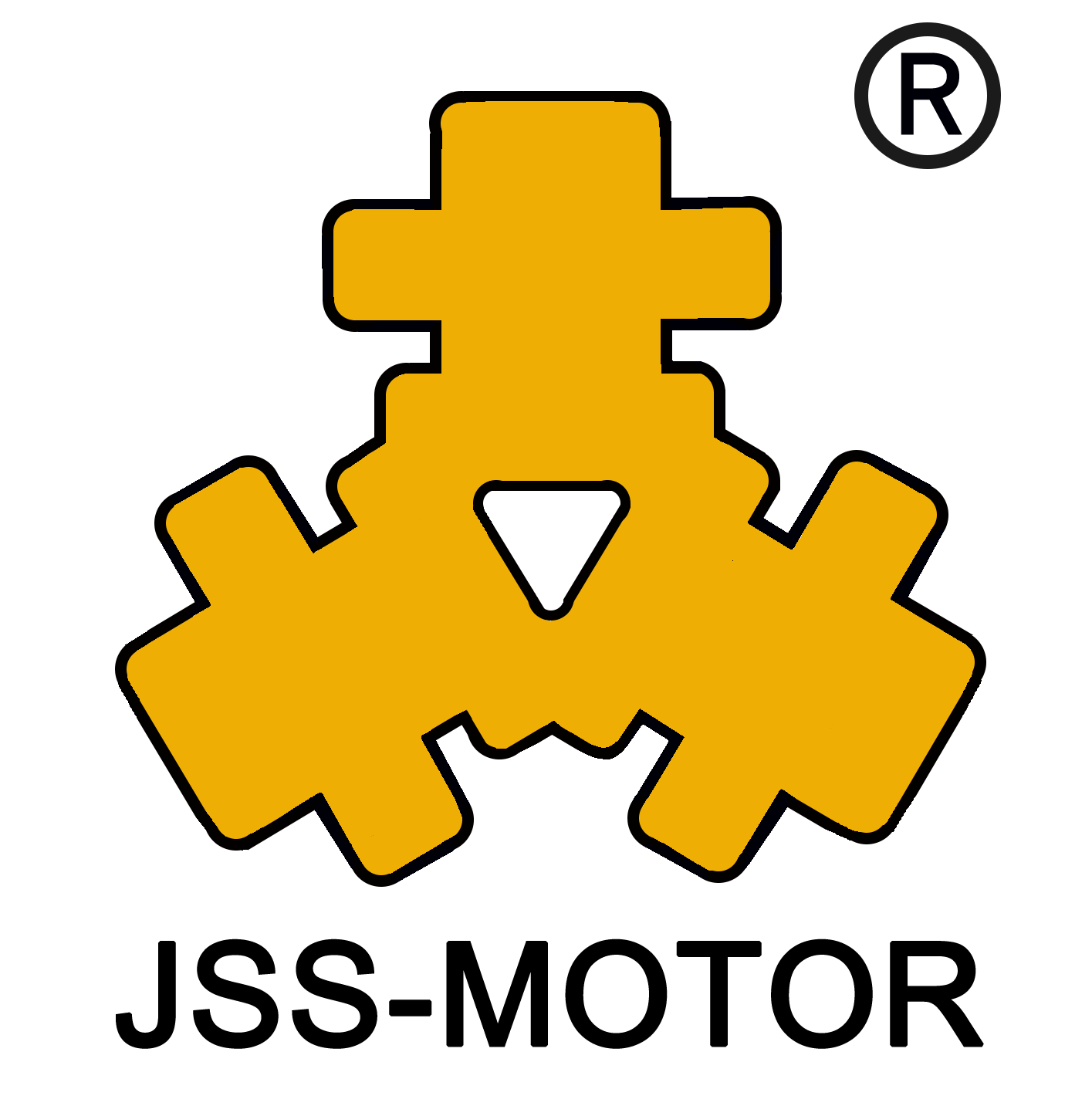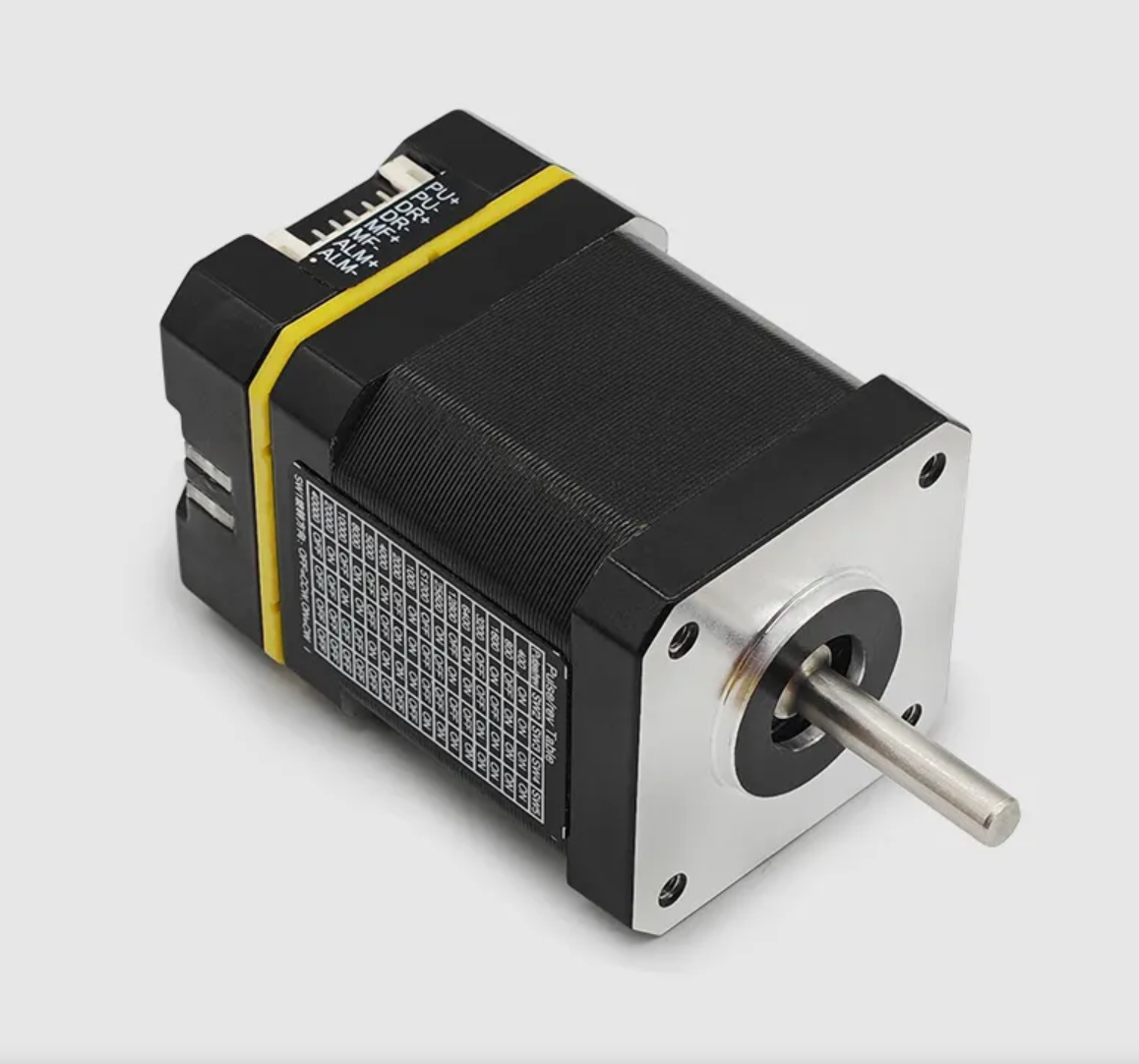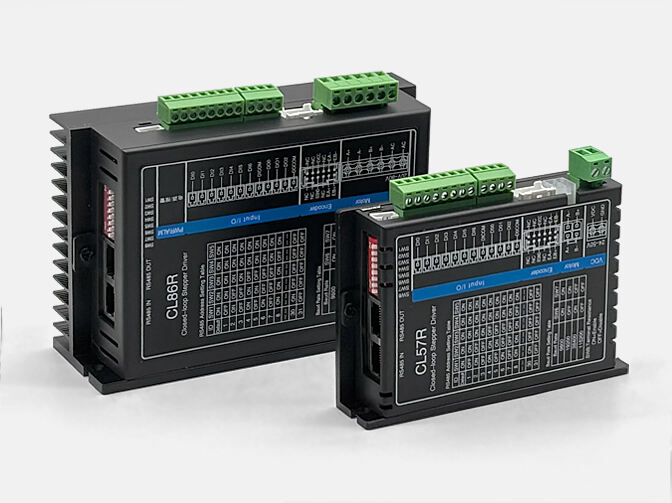Розуміння Приводи крокових моторів Основні принципи
Що таке драйвер крокового мотора?
Драйвери крокових двигунів виступають як важливі електронні пристрої, які керують роботою крокових двигунів, дозволяючи їм точно рухатися в багатьох різних застосуваннях. Ці драйвери фактично приймають електричні сигнали та перетворюють їх на реальний фізичний рух, забезпечуючи контроль над такими параметрами, як швидкість руху, напрямок та точка зупинки. Якщо розглянути складові доброго драйвера крокового двигуна, можна виокремити три основні частини: джерело живлення, керуючу електроніку та з'єднання, необхідні для інтерфейсу з іншим обладнанням. Усі ці елементи працюють разом, щоб визначити ефективність роботи всієї системи. У разі автоматизованих систем та роботів ці драйвери двигунів стають абсолютно необхідними, адже вони забезпечують більш плавне функціонування та триваліший термін служби завдяки кращому контролю руху. Найважливішим фактором тут є їхня точність. Для завдань, що вимагають точних вимірювань, навіть незначні помилки можуть призвести до серйозних проблем у майбутньому, викликати втрати часу чи випуск бракованих продуктів.
Основні функції в системах керування рухом
Драйвери крокових двигунів відіграють ключову роль у системах керування рухом, адже виконують важливі функції, як-от контроль прискорення та уповільнення. Це дозволяє машинам рухатися плавно й точно, що має надзвичайне значення для автоматизованих процесів. Усередині цих драйверів є системи зворотного зв’язку, які забезпечують правильне та надійне функціонування навіть за змінних умов. Вони перетворюють аналогові сигнали на вихідні сигнали ШІМ, фактично перекладаючи електричні команди в реальний рух двигуна. Ми бачимо це в усіх струмоприладах, таких як верстати з ЧПУ, 3D-принтери та роботизовані руки, де точність є найважливішою для виконання складних операцій. Якщо подивитися на те, як ці пристрої виконують свої завдання день у день без помилок, стає зрозуміло, чому драйвери крокових двигунів стали настільки незамінними в різних видах автоматизованого обладнання. Їх відрізняє здатність приймати складні команди керування й перетворювати їх на стабільні механічні дії, що пояснює, чому виробники й надалі покладаються на них, незважаючи на з’яву новітніх технологій.
Ключові фактори вибору правильного приводу крокового мотора
Відповідність специфікацій мотора та сумісність приводу
Підбір правильного драйвера крокового двигуна починається з уважного вивчення технічних характеристик самого двигуна, щоб забезпечити їхню сумісність. Важливими параметрами є кут кроку, величина утримувального моменту при зупиненому двигуні, а також вимоги до напруги, які мають відповідати обраному драйверу для плавної роботи. Також важливо врахувати струмові характеристики, адже якщо драйвер не розрахований на достатню потужність, це може призвести до його пошкодження під час роботи двигуна під навантаженням. Перед придбанням завжди перевіряйте ці параметри, адже їхня неправильна оцінка може призвести до втрати часу й коштів у майбутньому. Виробники зазвичай надають докладні технічні специфікації та графіки характеристик, які чітко демонструють, як різні двигуни взаємодіють із різноманітними драйверами. Урахування всіх цих факторів має сенс з точки зору ефективності, а також сприяє збільшенню терміну служби обладнання без потреби заміни компонентів.
Поточні рейтинги та вимоги до круття
Важливо розуміти, що значення струму має велике значення при визначенні необхідного обертового моменту для крокових двигунів. Кількість струму, яку може витримати драйвер, в основному визначає рівень доступного обертового моменту. Для більшості застосувань розрахунок оптимального рівня струму є досить критичним, якщо ми хочемо, щоб система працювала правильно. Підбираючи драйвер, інженери зазвичай мають збалансувати потреби в обертовому моменті та вимоги до швидкості, щоб двигун працював плавно навіть під час зміни навантажень у процесі експлуатації. Проте більший обертовий момент не завжди означає кращі результати. Надмірний обертовий момент насправді може призводити до перегріву всередині корпусу двигуна. Більшість виробників дотримуються встановлених рекомендацій, щоб зберігати двигун холодним і уникати передчасного зношення. На підставі моїх спостережень на практиці, зосередження на ефективності, а не на досягненні максимально можливого обертового моменту, забезпечує довшіший термін служби двигунів і менше проблем у подальшій експлуатації.
Типи драйверів та фактори продуктивності
Відкриті та замкнуті системи драйверів
При виборі драйвера крокового двигуна важливо враховувати різницю між системами з відкритим і замкненим контуром, адже ці два підходи працюють по-різному і підходять для різних ситуацій. Системи з відкритим контуром є досить простими, адже вони просто виконують команди без механізму зворотного зв’язку. Це робить їх дешевшими та простішими у налаштуванні для завдань, де точне позиціонування не є критичним, наприклад, у деяких базових конфігураціях 3D-принтерів. Навпаки, системи з замкненим контуром оснащені датчиками, які в реальному часі відстежують події. Ці системи можуть автоматично коригувати роботу, якщо щось відхиляється від норми, саме тому їх воліють використовувати для завдань, що потребують точного керування, наприклад, у верстатах з ЧПК чи роботизованих маніпуляторах. Для тих, хто займається проектами з обмеженим бюджетом, системи з відкритим контуром часто є цілком придатним варіантом. Але ті, хто займається високоточним виробництвом, як правило, вважають, що інвестиції в системи з замкненим контуром окупляться в довгостроковій перспективі. У кінцевому підсумку, більшість інженерів оцінюють такі фактори, як необхідна точність рухів, порівняно з тим, скільки вони готові витратити коштів на початку.
Можливості мікрокроку для точності
Коли справа доходить до отримання точних результатів від крокових двигунів, субподіл має велике значення. Ця техніка полягає у розбитті кожного кроку двигуна на набагато менші частини, що насправді забезпечує більш точне переміщення двигуна, одночасно зменшуючи ті неприємні пульсації крутного моменту, які роблять роботу дратівливою. Режим повного кроку просто не настільки добре справляється з вібраціями, порівняно з субподілом, що особливо помітно в делікатних операціях, таких як 3D-друкарські головки чи лазерні гравірувальні пристрої, де навіть найменші неточності мають значення. Випробування в реальних умовах показали, що машини, які працюють на двигунах із субподілом, загалом працюють тихіше та точніше позиціонують компоненти. Якщо подивитися на відгуки виробників CNC-верстатів, то вони помічають суттєві відмінності в тому, наскільки плавно працює їхнє обладнання з дня на день, а також менше виникає проблем з вирівнюванням під час роботи над складними дизайнами. Тому багато сучасних виробничих систем активно покладаються на цю технологію для виконання найважче виконуваних завдань.
Енергетичні та екологічні вимоги
Забезпечення напругою та термічне керування
Важливо знати, як керувати електроживленням драйверів крокових двигунів, особливо щодо напруги живлення й підтримки охолодження. Більшість драйверів крокових двигунів, у тому числі моделі, як-от A4988, найкраще працюють у певних межах напруги. Для правильного функціонування їм потрібні окремі джерела живлення для керуючих схем і безпосередньо роботи двигуна. Якщо ми хочемо, щоб ці драйвери довше служили й не перегрівалися, додавання системи теплового управління має велике значення. Радіатори — це досить поширений спосіб вирішення цієї проблеми. Підбираючи джерело живлення з точки зору ефективності, також слід враховувати кілька змінних. Зміни навантаження з часом впливають на реальну потужність, яка нам потрібна. Досвід показує, що нехтування належним охолодженням часто призводить до зниження продуктивності або, в гіршому випадку, до повної несправності дорогих компонентів.
Зниження шуму та тривалість у важких умовах
Зменшення шуму має велике значення під час роботи з драйверами крокових двигунів, особливо на фабриках чи в інших місцях, де надмірний рівень шуму є проблемою. Існує кілька способів зменшити електричні перешкоди, у тому числі такі засоби, як фільтри та адаптивні методи керування, які досить добре працюють. Стійкість цих драйверів до важких умов, таких як екстремальні температури, накопичення бруду та вологи, суттєво впливає на їхню повсякденну роботу. Під час вибору драйвера варто звертати увагу на моделі, спеціально розроблені для експлуатації в складних умовах. Багато виробників тестували свої продукти в реальних умовах, демонструючи їхню стійкість. Головне, що драйвери мають витримувати різноманітні випробування, якщо ми хочемо, щоб наші двигуни працювали стабільно без постійних поломок чи замін у майбутньому.
ЧаП
Яка головна роль приводу крокового мотора?
Привід крокового мотора керує його роботою, дозволяючи точне переміщення шляхом перетворення вхідних сигналів у механічний рух. Це дозволяє точно керувати швидкістю, напрямком та позицією мотора.
Чому драйвери крокових моторів є необхідними в системах керування рухом?
Драйвери крокових моторів є важливими в системах керування рухом завдяки їх функціональності, такій як керування прискоренням та замедленням, що дозволяє здійснювати гладкі і точні рухи. Вони надзвичайно корисні в застосуваннях, де потрібна точність, таких як ЧПУ-станки та роботизовані руки.
Як можливості мікрокроку покращують точність крокового мотора?
Мікрокрок збільшує роздільність мотора, підрозбивши його кроки на менші прирости, що зменшує пульсацію моменту і вibracії. Це призводить до більш гладкої роботи та покращеної точності, що корисно в застосуваннях з високою деталізацією, таких як 3D-друкування та лазерна гравюра.



